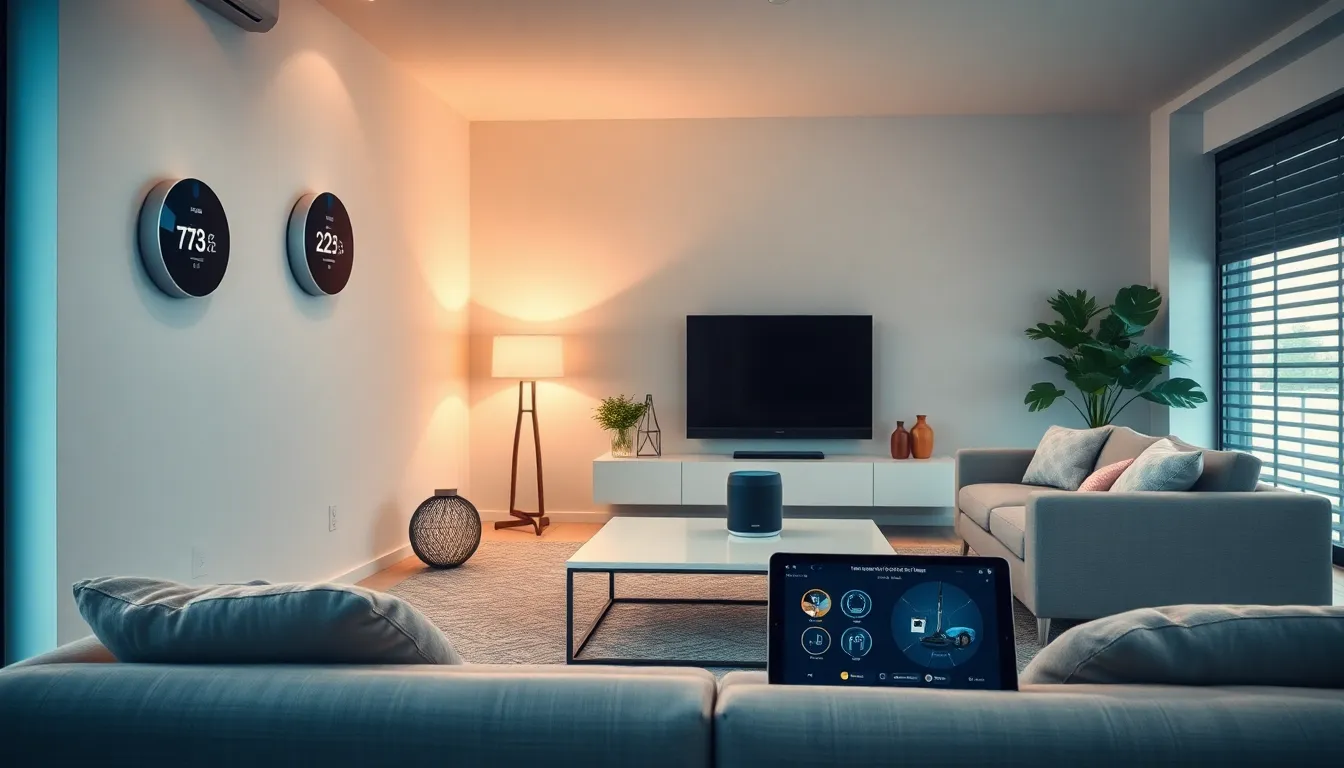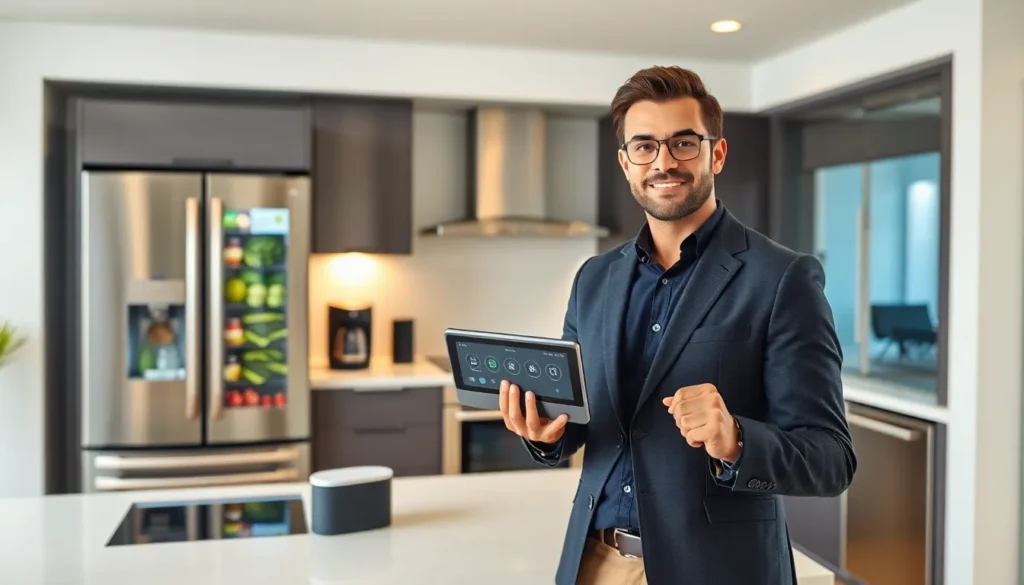Imagine a world where your coffee brews itself as you hit snooze for the fifth time, or where your smart fridge tracks your groceries better than your mom. Welcome to the realm of smart living products, designed to make life not just easier but downright delightful. In this guide, we’ll explore everything from the basics of smart technology to the latest trends, without putting you to sleep.
Table of Contents
ToggleWhat Are Smart Living Products?

Smart living products are devices and systems that use advanced technology to enhance daily life. They incorporate elements like connectivity, automation, and user-friendly interfaces, allowing for a convenient lifestyle. These products often connect to the Internet of Things (IoT), enabling them to communicate with one another and be controlled remotely. For instance, smart home devices can adjust lighting and temperature with a simple voice command, while health gadgets monitor your activity and provide insights into your well-being.
In short, smart living products turn mundane routines into efficient tasks, giving users more time to actually enjoy life. They range from startup innovations to established giants venturing into the smart ecosystem. Recognizing their potential can lead to a transformative experience in how one interacts with their environment.
The Rise of Smart Living Technologies
The journey of smart living technologies has been anything but slow. Over the past decade, there has been an explosion of interest in high-tech solutions for everyday problems. With increasing access to high-speed internet and advancements in mobile technology, consumers are more connected than ever. Initially seen as luxury items, smart living products have quickly become essential in many households.
Increased awareness of sustainability and energy efficiency has further propelled this trend. Users are not just seeking out convenience: they’re also looking for solutions that save money and help the environment. For example, smart thermostats can optimize heating and cooling, reducing energy wastage. In essence, the rise of smart technologies is driven by a combination of consumer desire for convenience, environmental mindfulness, and a bit of tech-savvy flair.
Types of Smart Living Products
When diving into the world of smart living products, it’s essential to categorize them to understand their functionalities better.
1. Smart Home Devices
These include tools like smart speakers, locks, and light bulbs that can be controlled via smartphones or voice-activated assistants. Imagine dimming the lights, locking the door, and setting the thermostat with just a few spoken words. These gadgets not only enhance home security but also contribute to overall energy efficiency.
2. Smart Health Gadgets
Health monitoring is taking a giant leap forward with devices such as smartwatches and fitness trackers. They track metrics like heart rate, sleep quality, and daily activity levels, delivering valuable insights right to users’ wrists. With clear data from these gadgets, individuals can make informed decisions about their health.
3. Smart Appliances
From refrigerators that manage grocery inventory to washing machines that conserve water, smart appliances are revolutionizing the kitchen and laundry room. These gadgets promise not just automation but also efficiency, making day-to-day tasks almost effortless.
Benefits of Integrating Smart Living Products
Integrating smart living products into everyday life offers numerous benefits. Primarily, convenience tops the list. Users can manage multiple devices through a single app, making life simpler. No more hunting for remotes or flipping through light switches, everything is within a tap.
Cost efficiency is another substantial advantage. Though some may hesitate at the initial investment, savings on bills due to better energy management often compensate in the long run. Also, many products come with features that promote safety, offering users peace of mind.
Also, the interconnectedness of smart devices allows for customized routines. For instance, a user can set a schedule for their thermostat to adjust temperatures based on when they’re home or out. This enhances comfort while minimizing excessive usage.
Challenges and Considerations
But, the journey into smart living isn’t without its bumps. Privacy concerns are at the forefront for many users. With devices constantly collecting data, questions arise about who has access to this information and how it’s being used. Consumers must be cautious and well-informed when selecting gadgets.
Another significant challenge lies in compatibility. Not all smart devices play nicely with each other, leading to frustrating experiences. It’s essential to research products for compatibility with existing systems to create a seamless smart home environment. Finally, the initial cost can deter potential buyers, although the long-term savings often outweigh these upfront expenses.
Future Trends in Smart Living Products
The future of smart living products is brimming with potential innovations. As artificial intelligence continues to grow, we can expect even smarter systems that learn individual routines and preferences, tailoring their functions accordingly. Imagine a kitchen that suggests recipes based on available ingredients or a living room that sets the mood for movie night automatically.
Also, sustainability will play a more significant role in product development. Manufacturers are focusing on creating energy-efficient devices that also reduce the carbon footprint. Expect more gadgets designed with eco-friendly materials and practices in mind.
Finally, the rise of voice-activated technology will continue to dominate. With consumer reliance on virtual assistants, products will increasingly integrate this feature for an even more streamlined user experience.



